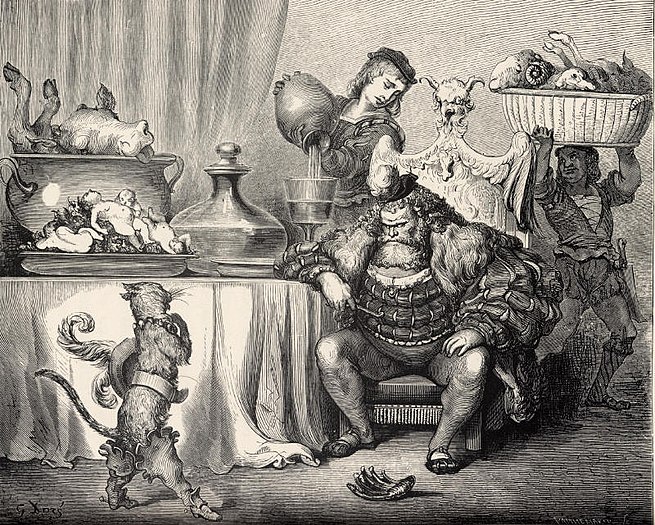Main Difference
The main difference between Ogre and Orc is that the Ogre is a West-European mythological creature and Orc is a mythical race of brutish humanoid creatures.
-
Ogre
An ogre (feminine: “ogress”) is a legendary monster usually depicted as a large, hideous, man-like being that eats ordinary human beings, especially infants and children. Ogres frequently feature in mythology, folklore, and fiction throughout the world. They appear in many classic works of literature, and are most often associated in fairy tales and legend with a taste for infants.
In mythology, ogres are often depicted as inhumanly large and tall and having a disproportionately large head, abundant hair, unusually colored skin, a voracious appetite, and a strong body. Ogres are closely linked with giants and with human cannibals in mythology. In both folklore and fiction, giants are often given ogrish traits (such as the giants in “Jack and the Beanstalk” and “Jack the Giant Killer”, the Giant Despair in The Pilgrim’s Progress, and the jötnar of Norse mythology); while ogres may be given giantish traits.
Famous examples of ogres in folklore include the ogre in “Puss in Boots” and the ogre in “Hop-o’-My-Thumb”. Other characters sometimes described as ogres include the title character from “Bluebeard”, the Beast from Beauty and the Beast, Humbaba from the Epic of Gilgamesh, Grendel from Beowulf, the Cyclops Polyphemus from Homer’s Odyssey, the related cyclops in the tales of Sinbad the Sailor, and the oni of Japanese folklore.
-
Orc
An orc (also spelled ork) is a fictional humanoid creature that is part of a fantasy race akin to goblins.
While the overall concept of orcs draws on a variety of pre-existing mythology, the main conception of the creatures stems from the fantasy writings of J. R. R. Tolkien, in particular The Lord of the Rings. In Tolkien’s works, orcs are a brutish, aggressive, repulsive and generally malevolent species, existing in stark contrast with the benevolent Elvish race and generally serving an evil power. Tolkien’s concept of orcs has subsequently been adapted and imported into other works of fantasy fiction as well as role-playing and strategy games (such as Dungeons & Dragons, Warhammer, and Warcraft), broadening the recognition of the creatures in popular culture.
Earlier references to creatures etymologically or conceptually similar to orcs can be found in Anglo-Saxon sources; including Beowulf and 16th-century Italian folk tales, in particular those of Giambattista Basile.
-
Ogre (noun)
A type of brutish giant from folk tales that eats human flesh.
-
Ogre (noun)
A brutish man reminiscent of the mythical ogre.
-
Orc (noun)
Any of several large, ferocious sea creatures, now especially the killer whale. from 16th c.
-
Orc (noun)
A mythical evil monstrous humanoid creature, usually quite aggressive and often green. from 17th c.
-
Orc (noun)
A porcine humanoid monster larger than humans, sometimes pink. found in Japanese pop-culture and called “orc” when imported to the West
-
Ogre (noun)
(in folklore) a man-eating giant.
-
Ogre (noun)
a cruel or terrifying person
“it is clear that I am no ogre”
-
Orc (noun)
(in fantasy literature and games) a member of an imaginary race of humanlike creatures, characterized as ugly, warlike, and malevolent.

